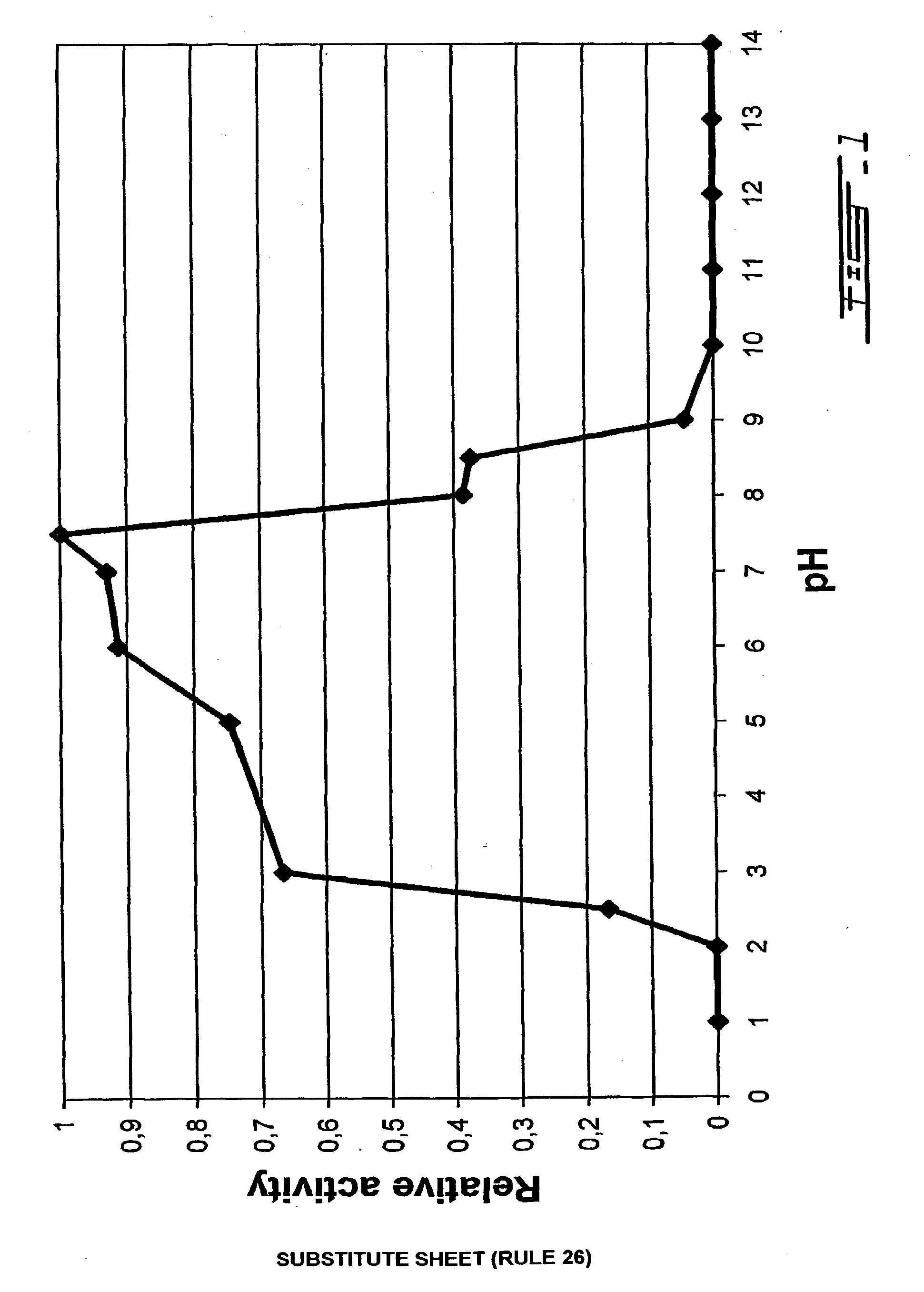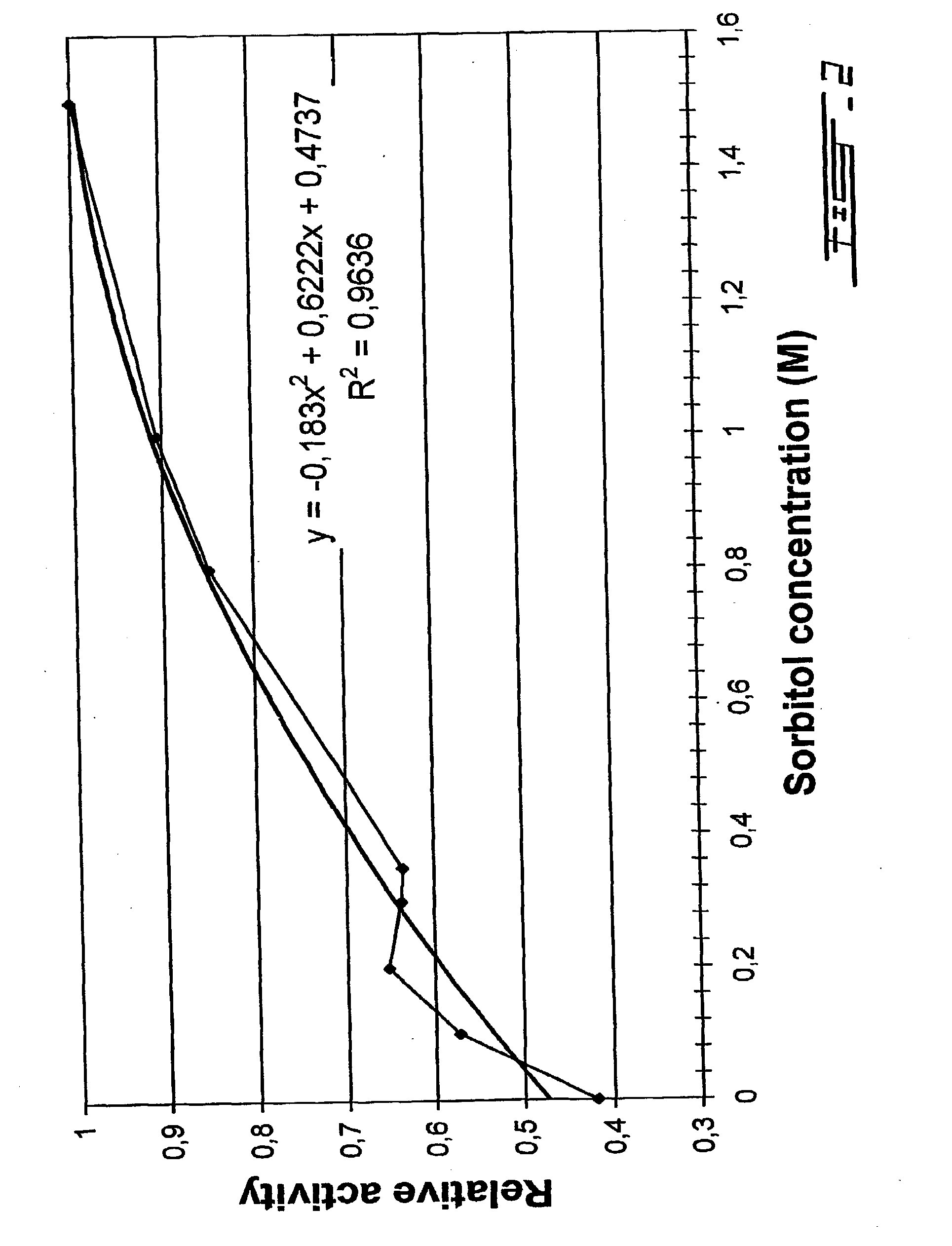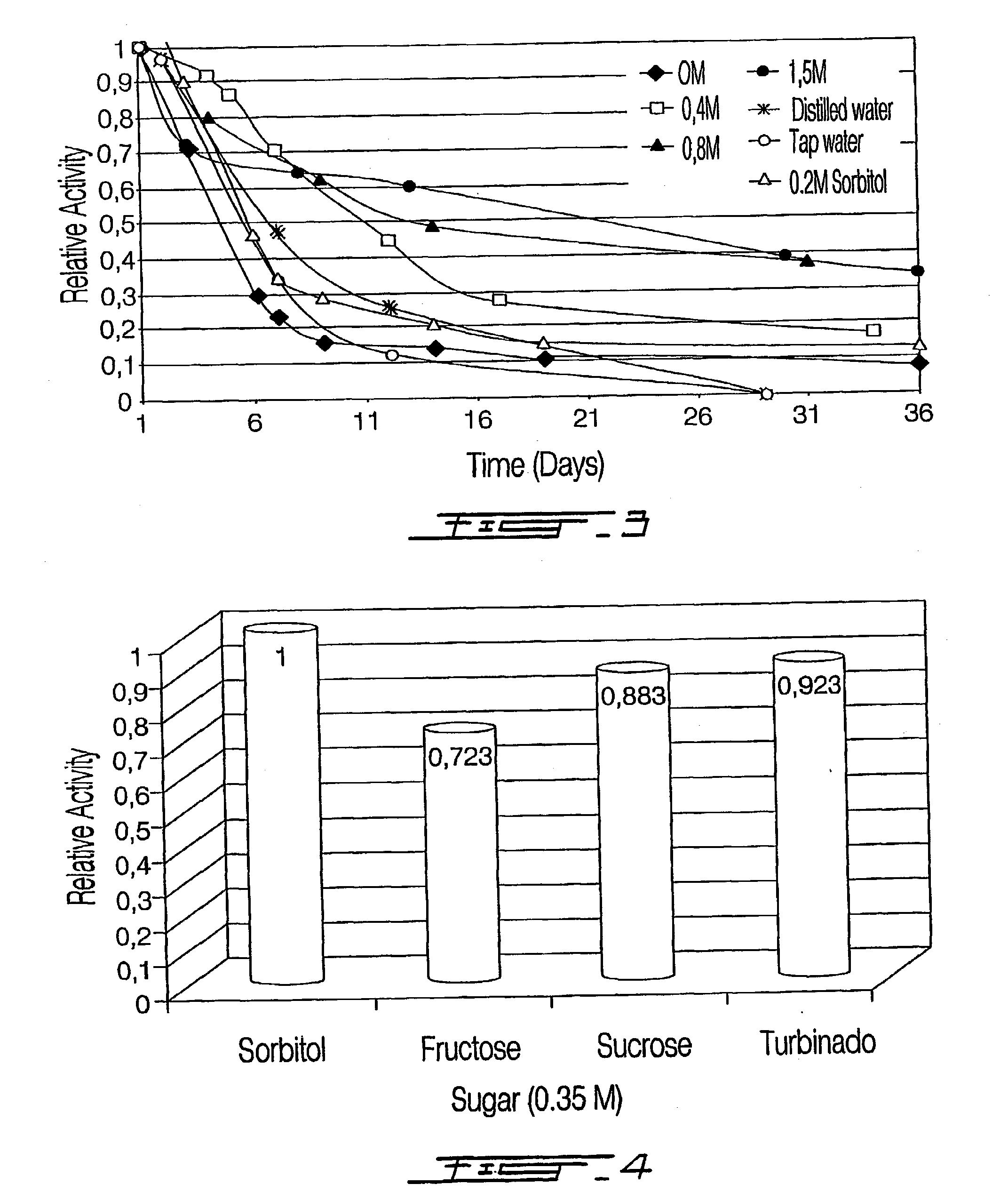Process of obtaining thylakoids from photosynthetic organisms; plant fractions obtained from the process; pure thylakoids; and methods of use of thylakoids as ROS scavengers, photo-protectors, biosensors biofilters and bioreactors
a technology of thylakoids and organisms, which is applied in the field of thylakoids isolating and recovering, can solve the problems of yellow light not being effectively absorbed by photosynthetic pigments, inability to see the human eye, and most pigments not very effective in absorbing ultraviolet light, etc., to achieve no substantial loss of activity, prevent the formation of aggregates, and prolong the shelf life
- Summary
- Abstract
- Description
- Claims
- Application Information
AI Technical Summary
Benefits of technology
Problems solved by technology
Method used
Image
Examples
experiment 1
Standardization of Experimental Conditions
Selection of Cell Culture
[0183] Human neuroblastoma cell line (IMR-32),which is known to respond to oxidative stress by apoptosis (Kim et al, 1999), was used as an in vitro cell model. IMR32 cells are particularly sensitive to ROS and other toxicants because their p53 gene product is sequestered in the cytoplasm. The sequestration renders the p53 inactive although the gene is not mutated.
Selection of ROS Inducer
[0184] Tert-butyl hydroperoxide (TBHP) was used as an oxidative stress-inducing agent. TBHP does not have any neuron specificity in contrast to oxidative stress induced by MPTP in dopaminergic neurons. This will allow comparisons if studies relative to more generalized oxidative stress conditions (like the ones found in many neurodegenerative diseases) have to be performed on different cells phenotypes.
A. Determination of Optimal Dosage of TBHP to Induce Apoptosis on IMR-32 Cells Culture
[0185] Experiments were done using 1000...
PUM
 Login to View More
Login to View More Abstract
Description
Claims
Application Information
 Login to View More
Login to View More - R&D
- Intellectual Property
- Life Sciences
- Materials
- Tech Scout
- Unparalleled Data Quality
- Higher Quality Content
- 60% Fewer Hallucinations
Browse by: Latest US Patents, China's latest patents, Technical Efficacy Thesaurus, Application Domain, Technology Topic, Popular Technical Reports.
© 2025 PatSnap. All rights reserved.Legal|Privacy policy|Modern Slavery Act Transparency Statement|Sitemap|About US| Contact US: help@patsnap.com



